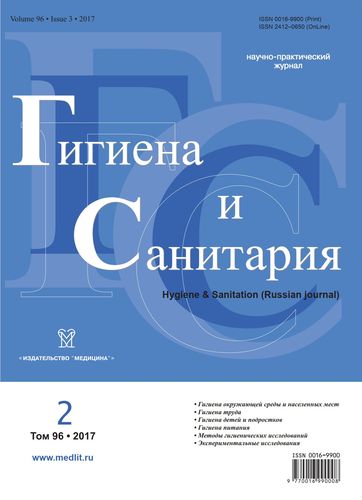Hygienic estimation of functional reserves and adaptive capabilities of students
- Authors: Setko N.P.1, Bulycheva E.V.1, Beilina E.B.1
-
Affiliations:
- Orenburg State Medical University
- Issue: Vol 96, No 2 (2017)
- Pages: 166-170
- Section: HYGIENE OF CHILDREN AND ADOLESCENTS
- Published: 21.10.2020
- URL: https://ruspoj.com/0016-9900/article/view/640665
- DOI: https://doi.org/10.47470/0016-9900-2017-96-2-166-170
- ID: 640665
Cite item
Full Text
Abstract
In the article there are presented data on characteristics ofpeculiarities of the functional state of medical 1-6 years students of higher educational institutions. The results were obtained with the aid of variation pulsometry. Students were shown to have typical elevated tone of the sympathetic nervous system, especially for students of the 1st, 3rd, 5th and 6th courses, that is confirmed by the amplitude mode (AMo), characterizing the sympathetic activity of autonomous nervous system (ANS), which is an average of the students 1st year accounted for 38.6 ± 1.89%, for students of the 3rd course - 38.5 ± 1.72%, for students of the 5th year (40.9 ± 3.25 %) and the students of 6th course (46.7 ± 2.59%). There was determined the trend to the centralization of the heart rate control, as evidenced by a reduced proportion of high-frequency waves (HF) by 29.2% to 35.2%, exceeding by 3.6 to 14.4 times in waves of the very low frequency (VLF) relative to the average standard values; the high proportion of students from 41% to 52%, with a mismatch of the sympathetic and parasympathetic compartments of the autonomic nervous system in the regulation of biological processes of adaptation. For medical students of higher education institutions there are typical functional reserves reduced from 20.5 % to 97.6% and a decrease in the proportion of students with a satisfactory adaptation by 40.4% from the 1st to the 6th year.
About the authors
N. P. Setko
Orenburg State Medical University
Author for correspondence.
Email: noemail@neicon.ru
Russian Federation
Ekaterina V. Bulycheva
Orenburg State Medical University
Email: e-sosnina@mail.ru
ORCID iD: 0000-0002-8215-8674
Russian Federation
E. B. Beilina
Orenburg State Medical University
Email: noemail@neicon.ru
Russian Federation
References
- Баевский Р.М., Берсенева А.П. Оценка адаптационных возможностей организма и риск развития заболеваний. М.: Медицина; 1997.
- Будук-оол Л.К. Социально-гигиенические факторы образа жизни студентов. Гигиена и санитария. 2015; 94(5): 95-7.
- Игишева Л.Н., Галеев А.Р. Комплекс ORTO-expert как компонент здоровьесберегающих технологий в образовательных учреждениях. Методическое руководство. Кемерово; 2003.
- Миннибаев Т.Ш., Рапопорт И.К., Чубаровский В.В., Тимошенко К.Т., Гончарова Г.А., Катенко С.В. Методические рекомендации по комплексной оценке состояния здоровья студентов по результатам медицинских осмотров. Вопросы школьной и университетской медицины и здоровья. 2015; (2): 40-57.
- Михайлов В.М. Вариабельность ритма сердца. Опыт практического применения. Иваново; 2000.
- Михайлова С.В., Норкина Е.В., Тремаскина Ю.И., Борзенко Д.А. Здоровый образ жизни - фактор профессионально-личностного развития студентов. Молодой ученый. 2014; (18-1): 64-5.
- Михайлова С.В., Карпова И.И., Чалкова Г.В., Титова М.Н., Любаев А.В. Оценка индивидуального здоровья студентов из различных социальных групп. Современные проблемы науки и образования. 2015; (1): 1481.
- Раевский Р.Т., Канишевский С.М. Здоровье, здоровый и оздоровительный образ жизни студентов. М.: Наука и техника; 2008.
- Судаков К.В. Индивидуальная устойчивость к эмоциональному стрессу. М.: Горизонт; 1998.
- Трапезникова М.В., Савкин В.В. Мониторинг и прогнозирование психофизиологического статуса и успеваемости студентов 1-2 курса медицинского вуза. Гигиена и санитария. 2015; 94(1): 104-8.
Supplementary files









